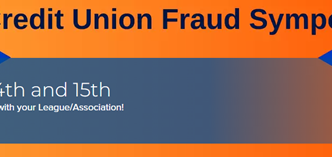By Kevin Polinsky, Managing Director of Financial Institution Sales, Compliance Systems.
Commercial lending is a balance of risk and reward.
When properly managed, this business line can significantly expand a credit union’s community impact. Part of that management edge is achieved by employing a digital strategy specifically tailored to match your credit union’s commercial lending vision. No doubt your institution shifted resources to more fully support digital services in 2020 — not only to benefit your members, but to address the challenges of staff operating remotely. Automation that was thought to be nice-to-have became critical infrastructure both to expedite loan origination and to efficiently manage the volume of loan servicing. The commercial loan life cycle is evolving, creating opportunities for digital improvement at all stages.
Simplifying applications. While the financial services industry lacks a standard commercial lending application, it is possible to dramatically reduce the burdensome data collection exercise that credit unions have traditionally required of their business borrowers. Technology can create significant lift during this phase. Integrating credit policy data into the digital application and automating the retrieval of public data to reduce the number of fields an applicant must complete can reduce the time required to complete an application to minutes.
The democracy of automated underwriting. Automated underwriting used to be premier software intelligence harnessed by only the most enterprising of institutions. However, as the technology has become more commonplace and pricing models have moderated, credit unions of all sizes can take advantage of efficiencies that can shave weeks off the process.
Dynamic documenting. One of the many risks associated with commercial lending is the accuracy, validity, and enforceability of the loan documentation. Compliance solutions that are integrated with loan origination systems minimize duplicate data entry and render a complete and compliant commercial loan document package based on a credit union’s criteria. This technology can significantly reduce human touchpoints, improving the speed and efficiency with which loan documentation is assembled.
E-signing and paperless transactions. If any single innovation has already transformed the lending experience, it is e-signing. Electronic signatures and electronic contracts were granted validity and legal effect through the passage of the Electronic Signatures in Global and National Commerce Act. It’s been 20 years since the act became law, but e-signing commercial loan documents and conducting commercial loan transactions electronically have only recently gained wider traction. It’s evolved into an expectation of some members, expedited in no small part by the continuing coronavirus pandemic and related social distancing guidelines.
Generally, commercial loans that are unsecured or secured by personal property can be paperless and conducted electronically. Those secured by real estate, on the other hand, have traditionally required some wet ink signatures because of notarization and recording requirements. However, electronic and remote notarization in conjunction with electronic recording has increased the likelihood of completely electronic and paperless transactions.
As of February 2021, forty-eight states have either passed laws authorizing remote notarizations or issued an executive order implementing emergency remote notarization procedures in response to the pandemic. While state requirements of remote notarization vary, this potentially allows commercial loan documentation signed electronically to be notarized online instead of requiring parties to be physically present in the same room.
Electronic recording is rapidly becoming the standard for real property documents, with more than 70% of U.S. counties now supporting e-recording in February 2021. Documents with the recording stamp can be returned immediately after recording, speeding up delivery of the recorded documents to the title insurance company. Electronic recording also allows for the e-signing of real property documents instead of requiring wet ink signatures.
The increasing availability of e-signing and electronic and remote notary technology and resources means more credit unions will be able to move entirely to or provide support for electronic and paperless commercial loan transactions.
Automation in servicing. Many traditionally manual processes associated with the review, servicing, tracking and maintenance of commercial loan transactions can be automated. For example, transactions often require parties to provide financial documents to the credit union. Instead of manually entering those requirements into a spreadsheet and creating calendar reminders, credit unions can leverage technology to automate reports and reminders for the financial document delivery requirements. Similar automated reminders and tracking can be used for collateral, compliance, document and policy issues and exceptions.
The effect of these digitalization opportunities — available at every step in the process, aggregated over your portfolio — can significantly accelerate your institution’s transition to a more touchless loan process.






